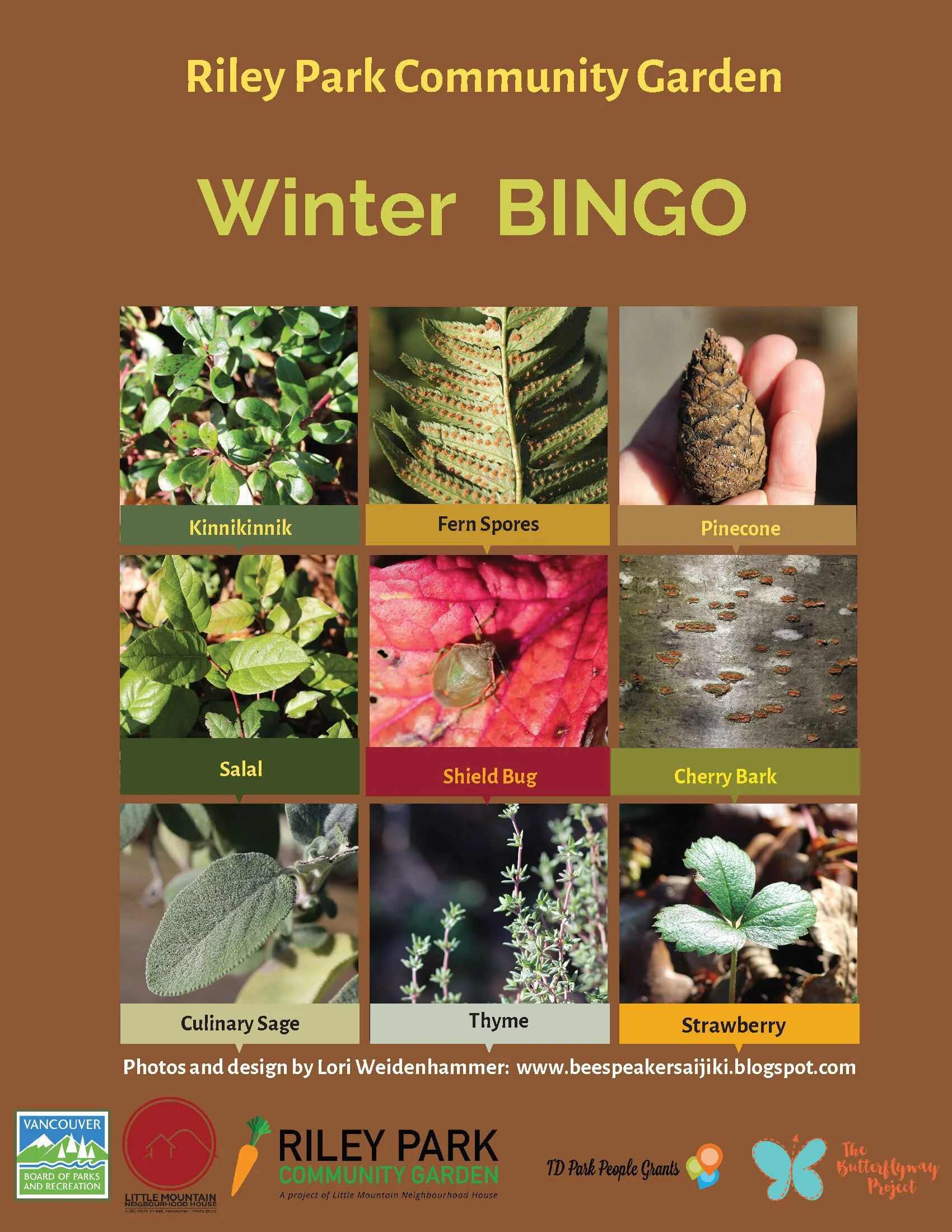Winter Pollinator Resources
We have self-guided learning in the community garden with a video tour with Madame Beespeaker showing plants that support our pollinators; a series of BINGO Cards with descriptive narrative and will have a Winter Pollinator Map. A huge thank you to TD Parks People grant to support our Winter Pollinator project.
Winter Pollinator Map
Winter Pollinator Bingo
See how many pollinators you can find in the garden or in your own garden. See if you can make a line. Read the descriptive narrative of the cards to learn more and help you on your self-guided pollinator walk. Pictures are taken by Lori Weidenhammer, in the garden.






Pollinator Plants in Our Garden
In this video, Madame Beespeaker discusses the plants we grow to support pollinators year-round. Filmed Jan. 2021 in the garden.










